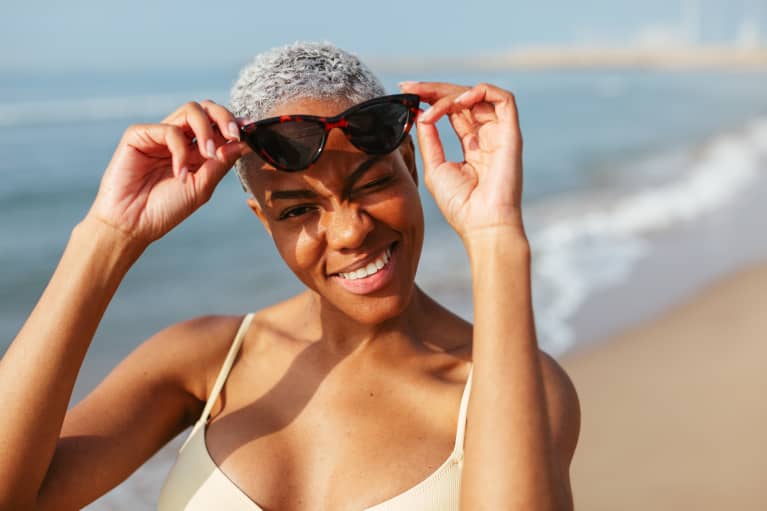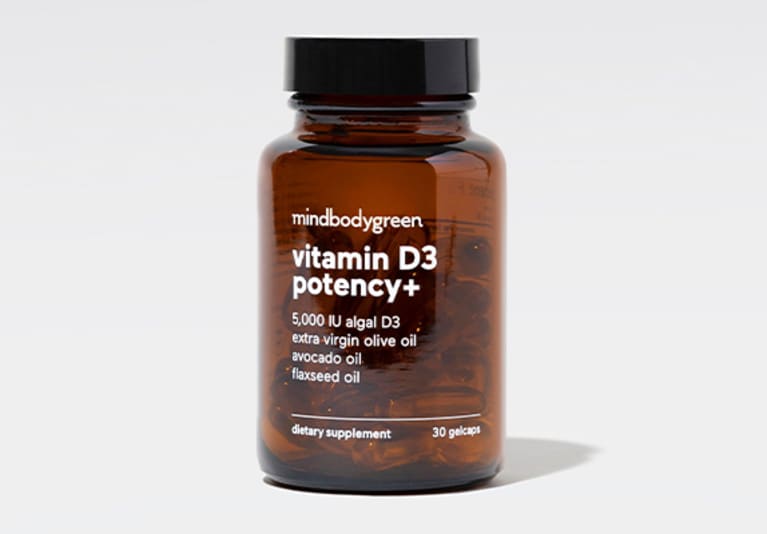
Summer is in full swing, which means sunny days outdoors are easily obtainable in many parts of the world (hello, Northern Hemisphere). If you’re relaxing on the beach or by the pool every chance you get (and undoubtedly feeling the mood lift that comes along with basking in the sun), you may think you’re getting plenty of vitamin D. After all, it is nicknamed the “sunshine vitamin!”
While our skin does convert some of the sun’s rays into vitamin D, the reality is that it’s a somewhat inefficient and unreliable process to rely on for your vitamin D needs throughout life—especially considering 29% of U.S. adults are deficient in the essential vitamin and a whopping 41% are insufficient. (Not to mention the risks of cumulative sun exposure, too).
Here are the three main reasons we can’t rely on the sunshine for all of our vitamin D—even in the summer.
Reason No.1: Our skin’s conversion of vitamin D isn’t that effective.
Don’t get us wrong, the fact that the body can turn sunlight into vitamin D on its own is extremely cool! However, the logistics of this process are somewhat inefficient.
vitamin D3 potency+
Optimized vitamin D3 with absorption technology for whole-body health*

When exposed to certain wavelengths of UVB rays, the skin is only able to convert approximately 15% of 7-dehydrocholesterol (aka provitamin D3) into previtamin D3. From there, previtamin D3 thermally isomerizes into vitamin D3 (aka active vitamin D) in the skin, and is then taken to the liver and kidneys for further activation steps, so it can be used throughout the body.
What’s more, the skin requires complete exposure (as in, without SPF) to successfully produce vitamin D in the skin. This brings us to our second reason we shouldn’t rely on the sun to achieve sufficient vitamin D status…
Reason No.2: SPF inhibits vitamin D production.
If you’re following proper sun protection practices—e.g., wearing sunscreen, reapplying after getting wet, staying in the shade during high noon, wearing sunglasses and a hat to protect your eyes and face, etc.—your sun exposure simply won’t be direct for the majority of the day.
The SPF in sunscreen also protects your skin by directly blocking the sun’s UV rays. Considering your skin needs UVB rays to convert provitamin D3 into previtamin D3, cutaneous production (i.e., in the skin) of vitamin D simply isn’t possible when wearing well-applied sunscreen.
And if you’re thinking “oh that’s fine, I only use a low SPF on my body so I’m sure my skin will still produce vitamin D,” think again: A 2016 scientific review from PLoS One reveals that an SPF of just 15 can reduce vitamin D synthesis by over 90 percent!
That’s right, wearing sunscreen results in less than 10% vitamin D conversion in an already inefficient process operating at about 15% capacity without any SPF protection. In other words? Getting adequate vitamin D from sunshine alone simply isn’t practical.
Reason No.3: Getting enough cutaneous vitamin D is uniquely challenging.
If that science wasn’t convincing enough for you, there are a variety of factors that affect each individual’s ability to produce vitamin D via the sun, including:
- Location
- Altitude
- Season
- Skin tone
- Age
- Time of the day
- Clothing and other skin coverings
So, yes, in the peak of summer, during the middle of the day, near the equator, a person of a certain age (i.e., younger, seeing as vitamin D production slows down with age) and lighter skin tone with sufficient skin surface area exposed could, in fact, have the perfectly sunny storm of circumstances to create enough vitamin D on their own.
Given the hoops one person must jump through in order to achieve sufficient cutaneous vitamin D synthesis, this isn’t feasible for the majority of individuals. And even in these absolutely perfect circumstances, protecting yourself from the sun’s intense rays becomes a much larger concern, and smart sun care is a must. (Which brings us back to reason No. 2.)
How to make sure you get enough vitamin D in the summer.
There are three different ways you can get vitamin D: the sun, food, and supplements. We’ve already covered why sunlight is a finicky source of D, so let’s talk about food for a moment here.
In a previous mbg article, integrative dietitian Whitney Crouch, RDN, CLT shared why food is an equally unreliable source of the sunshine vitamin: “Vitamin D is found in very few foods—and the foods that it is found in do not have amounts that will move the needle much in terms of total amount humans need for health.”
In fact, nutrition scientist Ashley Jordan Ferira, Ph.D., RDN previously shared a detailed list of natural and fortified food sources of vitamin D and the amounts you would actually need to move that needle. She explains, “You can’t eat your way to daily vitamin D sufficiency. I mean, you could…but you wouldn’t want to, and it might break the bank. How about 50 glasses of milk?” (That daily milk quota isn’t going to work for most).
Even if you’re eating foods with the highest amounts of vitamin D (e.g., trout, salmon, and UV-irradiated mushrooms), they still don’t provide the amount of vitamin D required to achieve and sustain healthy vitamin D status.
The final solution? A high-quality daily vitamin D3 supplement with adequate dosage will help you achieve and maintain sufficient vitamin levels, no matter the time of year or weather forecast.*
That said, not all D supplements are created equal—consider prioritizing a premium quality, high-potency D3 with a healthy fat source to promote optimal absorption.* For 5,000 IU of plant-sourced D3 and a built-in trio of organic oils (i.e., avocado, flax, and olive), mbg’s vitamin D3 potency+ has you covered.
We love safely soaking up the sun’s rays come summertime, but getting enough vitamin D from sunlight simply isn’t practical. Getting adequate vitamin D from diet is a dead end as well, which leaves one viable source we can count on year-round: A premium vitamin D3 supplement.
For a high-quality vitamin D3 supplement that will work for you and your needs, check out mbg’s vitamin D3 potency+, or peruse our top picks for vitamin D supplements in this comprehensive product roundup.
If you are pregnant, breastfeeding, or taking medications, consult with your doctor before starting a supplement routine. It is always optimal to consult with a health care provider when considering what supplements are right for you.

vitamin D3 potency+
Optimized vitamin D3 with absorption technology for whole-body health*
vitamin D3 potency+
Optimized vitamin D3 with absorption technology for whole-body health*


